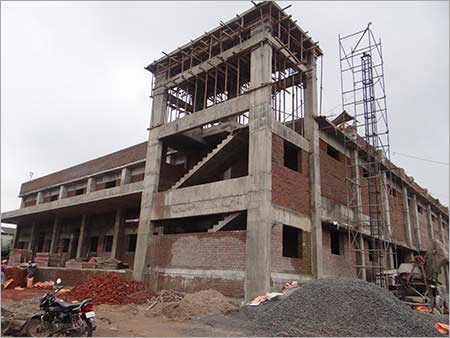Table of Contents
1. Introduction
Specific gravity is the ratio of the mass of a unit volume of soil at a stated temperature to the mass of the same volume of gas-free distilled water at a stated temperature.
2. Aim
To determine the specific gravity of soil solids by Pycnometer bottle method.

3. Specification
This test is specified in IS: 2720 (Part 4) – 1985. A soil’s specific gravity largely depends on the density of the minerals making up the individual soil particles. However, as a general guide, some typical values for specific soil types are as follows:
- The specific gravity of the solid substance of most inorganic soils varies between 2.60 and 2.80.
- Tropical iron-rich laterite, as well as some lateritic soils, usually have a specific gravity of between 2.75 and 3.0 but could be higher.
- Sand particles composed of quartz have a specific gravity ranging from 2.65 to 2.67.
- Inorganic clays generally range from 2.70 to 2.80.
- Soils with large amounts of organic matter or porous particles (such as diatomaceous earth) have specific gravities below 2.60. Some range as low as 2.00.
4. Equipment Required
- Pycnometer of about 1-litre capacity
- Balance accurate to 1 g
- Glass rod
- De-aired distilled water
5. Theory
The specific gravity of soil solids is defined as the weight of soil solids to the weight of an equal volume of water. In effect, it tells how much heavier (or lighter) the material is than water. This test method covers the determination of the specific gravity of soil solids that pass 4.75 mm sieve.
The equation for specific gravity,
Where W1=weight of Pycnometer in grams.
W2=weight of Pycnometer + dry soil in grams.
W3=weight of Pycnometer + soil + water grams.
W4=weight of Pycnometer + water grams.
Note: This method is recommended for coarse and fine-grained soils
6. Precautions
- Soil grains whose specific gravity is to be determined should be completely dry.
- If on drying soil lumps are formed, they should be broken to its original size.
- Inaccuracies in weighing and failure to completely eliminate the entrapped air are the main sources of error. Both should be avoided.
- While cleaning the glass jar, please be careful as there may be glass grains projecting out and it may tear the skin.
- Make sure, you handle the glass jar and conical cap without falling on your legs or floor. Hence, handle the equipment with care.
7. Procedure
- Clean and dry the pycnometer and weigh it along with the conical cap (W1 in gm).
- Select about 300 gm of dry soil free of clods and put the same into the pycnometer. Weigh it (W2 in g) with cap and washer.
- Fill the pycnometer with de-aired water up-to half its height and stir the mix with a glass rod. Add more water and stir it. Fit the screw cap and fill the Pycnometer flush with the hole in the conical cap and take the weight (W3 in g).
- Remove all the contents from the pycnometer, clean it thoroughly and fill it with distilled water. Weigh it (W4 in g).
- Now use the above equation for determining G.
- Repeat the same process for additional tests.
8. Table
9.Specimen Calculation
The specific gravity of soil is determined with the following formula
10. Result
Average G = ………………………….
11. Verification/ Validation
The value of specific gravity for the existing soil falls in the range 2.6 to 2.75. If there is any variation, check under the ‘specification’ provided and re-do the experiment to get accurate results.
12. Conclusion
The experiment is conducted as per the procedure laid down. The specific gravity of soil solids obtained is ______. This value falls in the range of 2.6 to 2.75. Hence the type of soil is _______.
13. Viva Questions
- Why do we need to compute the specific gravity of soil?
- What is the unit of specific gravity?
- What is the specific gravity of water?
- Explain the steps required to determine specific gravity by Pycnometer method
- What are the calculations required in computing specific gravity by Pycnometer method?
- What are the standard values of specific gravity?
- Do we need to conduct this test? Why?
- What is your inference on the result obtained?
- Can we use this method for all types of soils?
- Write phase diagrams for a) Dry soil b) Saturated soil
- What are the standard values of specific gravity?
- Do we need to conduct this test? Why?
I hope this article will help you. You may also want to see my other post from my Blog. If I have missed anything here, please let me know about that in the comment below this post.
Share it with your friends.
Happy Learning.
If you liked this article, then please help me to share this article with your friends through Facebook, Twitter, WhatsApp or Instagram. You can also find us on Facebook, Twitter, Instagram, Telegram Channel, YouTube Channel, and Pinterest. Also, Subscribe to our mailing list to get a new post update from us. And, do me a favour, if you find this post helpful, rate a 5 star below-